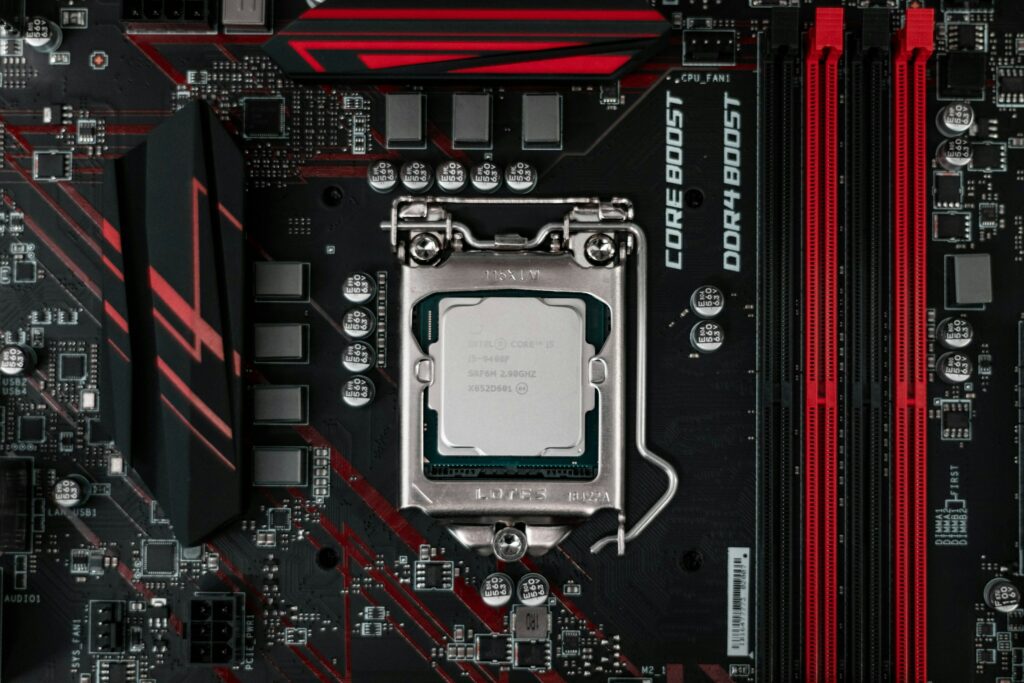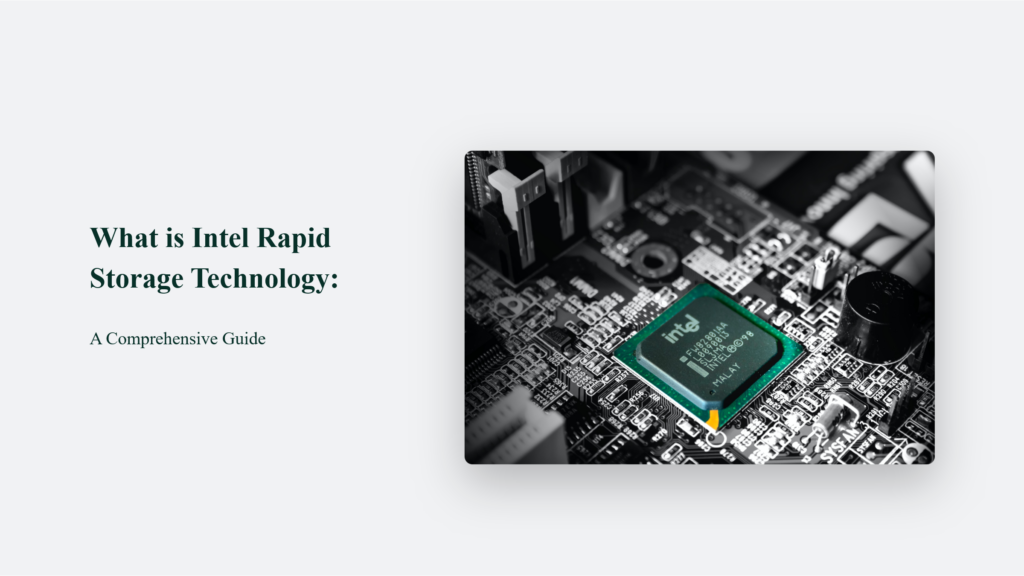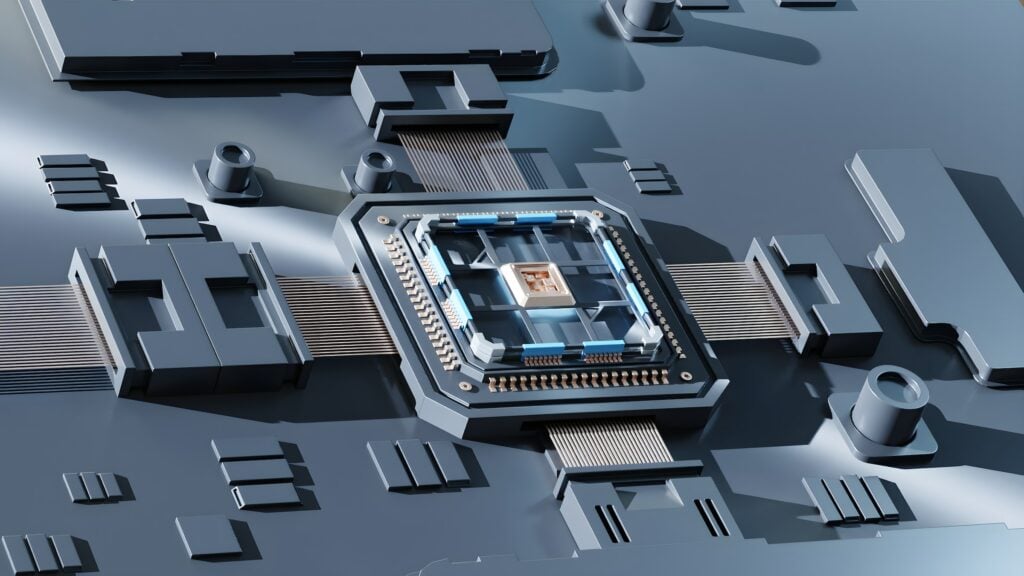

What is Intel Rapid Storage Technology: A Comprehensive Guide

As Seen On
In an era where data is king, the importance of efficient and reliable storage solutions cannot be overstated. Enter Intel Rapid Storage Technology (RST), a revolutionary tool that promises to transform your digital storage experience. But what is Intel Rapid Storage Technology, and how can it benefit you?
Let’s dive into the intricacies of this technology and discover how it can supercharge your computer’s performance.

What is Intel Rapid Storage Technology: A Glimpse into the Future of Storage
Intel Rapid Storage Technology (RST) is a powerful software solution designed by Intel to enhance the performance and reliability of SATA storage drives, especially on systems equipped with Intel chipsets. Initially known as Matrix RAID, Intel RST functions like a masterful conductor, efficiently orchestrating the performance of your computer’s storage drives to optimize speed and dependability.
One of the standout features of Intel RST is its support for Multiple Command Queuing (NCQ). NCQ is an extension of the Serial ATA (SATA) protocol that allows storage drives to optimize the order of read and write commands internally. This optimization not only reduces unnecessary hard drive (HDD) spinning, which is particularly beneficial for HDDs over SSDs, but it also minimizes noise and enhances the response speed to read and write commands.
Intel RST also offers enhanced security by enabling password protection for storage drives, thereby preventing unauthorized access.
Intel RST has evolved significantly, with various versions enhancing its capabilities. The Matrix RAID mode, included since version 5.x.x of the Intel Matrix Storage Manager, was a precursor to Intel RST. The transition from Intel Matrix Storage Manager to Intel RST occurred with version 9.5.0, marking a significant upgrade in the software’s functionality and support for newer technologies.
Regarding compatibility, Intel RST is supported by most modern Intel processors, making it a versatile solution for many systems. However, ensuring that your system’s processor is compatible with Intel RST is crucial, especially if it is older.
The Magic of RAID Technology
Intel RST stands tall with its support for RAID (Redundant Array of Independent Disks) technology. RAID is a storage superhero, combining multiple disk drives for improved performance and data protection. Intel RST supports various RAID levels, each with its unique strengths:
- RAID 0: Speeds up file access by distributing data across multiple drives. Think of it as a team of runners passing the baton in a relay race.
- RAID 1: Mirrors data on two drives, offering a safety net in case one fails.
- RAID 5 & 10: Offer enhanced data protection and performance, requiring more drives but providing a stronger shield against data loss
The Symphony of Speed: Intel Rapid Recover and Dynamic Storage Accelerator
Intel Rapid Recover and Dynamic Storage Accelerator are two integral components of Intel Rapid Storage Technology (RST), each offering unique benefits to enhance the performance and reliability of your computer’s storage system.
Intel Rapid Recover Technology
Intel Rapid Recover Technology is a feature within Intel RST that utilizes RAID 1 (mirroring) functionality. It allows data to be copied from a designated master drive to a recovery drive. It can be done continuously or on request:
- Continuous Mode: Any changes made to data on the master drive are automatically copied to the recovery drive when the system is re-docked.
- On Request: The master drive data can be restored to a previous state by copying data from the recovery drive back to the master drive.
Dynamic Storage Accelerator
The Dynamic Storage Accelerator is another feature of Intel RST, specifically designed to enhance the performance of SATA SSDs on your computer. It dynamically adjusts the system’s power management settings to optimize the SSD’s performance. Compared to the default power management settings, the adjustments made by this feature can make your SSD up to 15% faster.
This feature is particularly advantageous for users who require high-speed data access and improved overall system performance. It exemplifies Intel’s commitment to integrating advanced technology for optimizing computing experiences.
Both Intel Rapid Recover and Dynamic Storage Accelerator highlight Intel’s efforts to provide storage solutions and enhance the efficiency and reliability of data management and system performance. These technologies are key to ensuring that your computer’s storage system is secure and operates at its optimum capacity.

Empowering Your System with AHCI and Enhanced Features:
Advanced Host Controller Interface (AHCI) plays a significant role in Intel Rapid Storage Technology (RST), providing several key features that enhance the overall functionality and efficiency of storage devices in a computer system.
One of the primary benefits of AHCI in the context of Intel RST is its support for Native Command Queuing (NCQ). NCQ is an advanced feature that allows hard drives and solid-state drives (SSDs) to optimize the order of processing read and write commands. This optimization leads to improved performance, especially under circumstances where multiple requests are being processed simultaneously. It’s particularly beneficial for hard drives, as it minimizes the movement of the read-write heads, speeding up access times.
Another significant feature enabled by AHCI in Intel RST is the hot swapping capability. Hot swapping allows for SATA drives to be removed or inserted while the system is running without the need for a system restart. This feature adds flexibility and convenience, especially in environments where frequent changes to storage configurations are necessary, such as in server setups or systems used for testing different hardware configurations.
AHCI, a traditional storage protocol, was initially designed with hard drives in mind. It manages a single storage request queue with a queue depth of 32 commands. While effective for hard drives, this design has some limitations when using SSDs.
For instance, AHCI exhibits relatively high latency with SSDs, as the specification wasn’t originally developed for non-rotating storage media like flash memory. Moreover, the limited queue depth of AHCI can become a bottleneck in systems with high I/O request rates.
It’s also important to note that AHCI has been a standard feature in most modern motherboards, enabled by default in the system’s BIOS or UEFI.
It’s supported by various operating systems, including Windows (from Vista onwards), Linux, and various open-source OSes. However, switching from IDE to AHCI mode can be challenging if the operating system is installed with AHCI disabled. Windows provides a registry workaround to enable AHCI post-installation, but older operating systems might require specific hardware drivers for AHCI support.
While AHCI offers substantial benefits, it has been superseded by the Nonvolatile Memory Express (NVMe) interface in the context of high-performance SSDs. NVMe, explicitly designed for NAND flash and high-performance SSDs, provides much faster performance, reduces latency, and significantly increases the number of I/O queues and their depths compared to AHCI.
Why is Intel RST a Game-Changer?
Intel Rapid Storage Technology (RST) stands out as a significant advancement in the realm of computer storage solutions, particularly for systems using SATA drives. The key benefits of using Intel RST can be summarized as follows:
Improved System Performance:
Intel RST significantly reduces the time required for systems to boot up and for applications to load. Utilizing the combined capabilities of SSDs and HDDs enhances overall system responsiveness, allowing for more efficient use of time and resources.
Enhanced Data Protection:
The technology incorporates data mirroring and striping features. These features play a crucial role in safeguarding data against potential drive failures, ensuring higher data security.
Better System Reliability:
Utilizing RAID technology, Intel RST distributes data across multiple drives. This distribution significantly diminishes the likelihood of total data loss in the event of a drive failure, offering a more reliable storage solution.
Efficient Use of Space:
Intel RST allows for the creation of a virtual drive that combines the speed of an SSD with the larger storage capacity of an HDD. This amalgamation provides the advantages of both types of drives, ensuring both fast performance and ample storage space.
Ease of Installation:
The process of installing Intel RST is straightforward. It involves downloading and installing the driver from Intel’s website and configuring the virtual drive using the Intel RST software.
Compatibility and Cost-Effectiveness:
Intel RST is compatible with a broad range of systems that support RAID and AHCI modes. It also allows users to achieve the high performance of an SSD without the necessity of investing in a large-capacity SSD, thus offering a cost-effective solution.
Features and Installation Ease:
Intel RST includes a user-friendly GUI for configuring RAID arrays and managing storage devices, and it supports advanced features like S.M.A.R.T. monitoring and TRIM commands for SSDs. It also includes support for Intel Optane memory, further enhancing storage performance.
Troubleshooting and Comparison:
Regular monitoring of drives is essential for early detection of issues. Unlike other storage solutions, Intel RST offers advantages like ease of setup, compatibility with a wide range of devices, and features like hot swapping and automatic drive recovery.
Intel RST is a technology that continuously evolves, offering new features and bug fixes regularly. It ensures that systems using it stay up to date-and maintain optimal performance. Users looking for a robust, efficient, and flexible storage solution will find Intel RST an ideal choice.

Installation and Best Practices
Installing Intel Rapid Storage Technology (RST) is a relatively straightforward process that can significantly enhance your system’s performance, especially if you’re using RAID configurations or multiple drives. Here’s a general guide on how to install and set up Intel RST:
Downloading Intel RST:
- Visit Intel’s website or your computer manufacturer’s website to download the appropriate Intel RST driver for your system. Choosing a version compatible with your operating system and hardware is essential.
- The latest version of Intel RST, as of April 2023, was 18.7.6.1010.3, which supports various features like system acceleration with Intel Optane memory, configuration, and maintenance of RAID 0/1/5/10, and Intel VMD support on 11th Gen platforms.
Installation Process:
- Once the download is complete, run the SetupRST.exe file to begin the installation. The installer will guide you through the process.
- Suppose you’re installing a new operating system on the NVMe storage drive. In that case, you might need to load the Intel RST driver during the installation of the operating system. It involves using a USB drive with the driver files and selecting the ‘Load Driver’ option in the Windows setup.
Setting Up a RAID-Ready System:
- If you plan to use RAID, ensure your BIOS is set up correctly. You’ll need to access the BIOS settings (usually by pressing F2 during startup), navigate to the Configuration or Advanced menu, and then to the SATA Drives or Drive Configuration menu. You can set the RAID Mode to RAID or enable Intel RAID Technology here.
- Save these BIOS settings and exit the setup program.
Managing RAID and Intel Optane Memory:
- After installation, you can manage RAID volumes, enable acceleration of supporting Intel SSDs, and configure Intel Optane memory using the Intel RST user interface.
- The Intel RST user interface provides options for creating, deleting, and modifying RAID volumes, managing volume, and turning acceleration on or off with Intel Optane memory-capable applications.
Best Practices and Additional Tips:
- Ensure you use the most recent version of the Intel RST driver for optimal performance and compatibility.
- Regularly back up your data to avoid loss in drive failure or other issues.
- If you encounter issues during installation, consult the Intel RST installation guide or seek assistance from your system manufacturer, especially if your system design is customized.
Remember, while these steps provide a general overview, the exact process may vary depending on your hardware and software configuration. It’s always a good idea to refer to the documentation provided by Intel or your system manufacturer for detailed instructions tailored to your setup.
Frequently Asked Questions:
What is Intel Rapid Storage Technology?
Intel RST is a software solution that enhances the performance and reliability of SATA storage drives.
How does Intel RST benefit my computer?
It offers faster boot and application loading times, enhanced data protection, and improved system reliability.
Do I need Intel RST if I don’t use RAID?
While Intel RST offers significant benefits with RAID configurations, its other features like improved SSD performance and data protection are beneficial even for single-drive systems.
Embracing the Storage Revolution
Intel RST stands as a testament to Intel’s commitment to advancing storage technology. Whether you’re a casual user or a tech enthusiast, integrating RST into your system promises a notable boost in performance and reliability. It’s not just about storing data; it’s about doing it smarter, faster, and safer.
Konger
Up until working with Casey, we had only had poor to mediocre experiences outsourcing work to agencies. Casey & the team at CJ&CO are the exception to the rule.
Communication was beyond great, his understanding of our vision was phenomenal, and instead of needing babysitting like the other agencies we worked with, he was not only completely dependable but also gave us sound suggestions on how to get better results, at the risk of us not needing him for the initial job we requested (absolute gem).
This has truly been the first time we worked with someone outside of our business that quickly grasped our vision, and that I could completely forget about and would still deliver above expectations.
I honestly can't wait to work in many more projects together!
Disclaimer
*The information this blog provides is for general informational purposes only and is not intended as financial or professional advice. The information may not reflect current developments and may be changed or updated without notice. Any opinions expressed on this blog are the author’s own and do not necessarily reflect the views of the author’s employer or any other organization. You should not act or rely on any information contained in this blog without first seeking the advice of a professional. No representation or warranty, express or implied, is made as to the accuracy or completeness of the information contained in this blog. The author and affiliated parties assume no liability for any errors or omissions.

